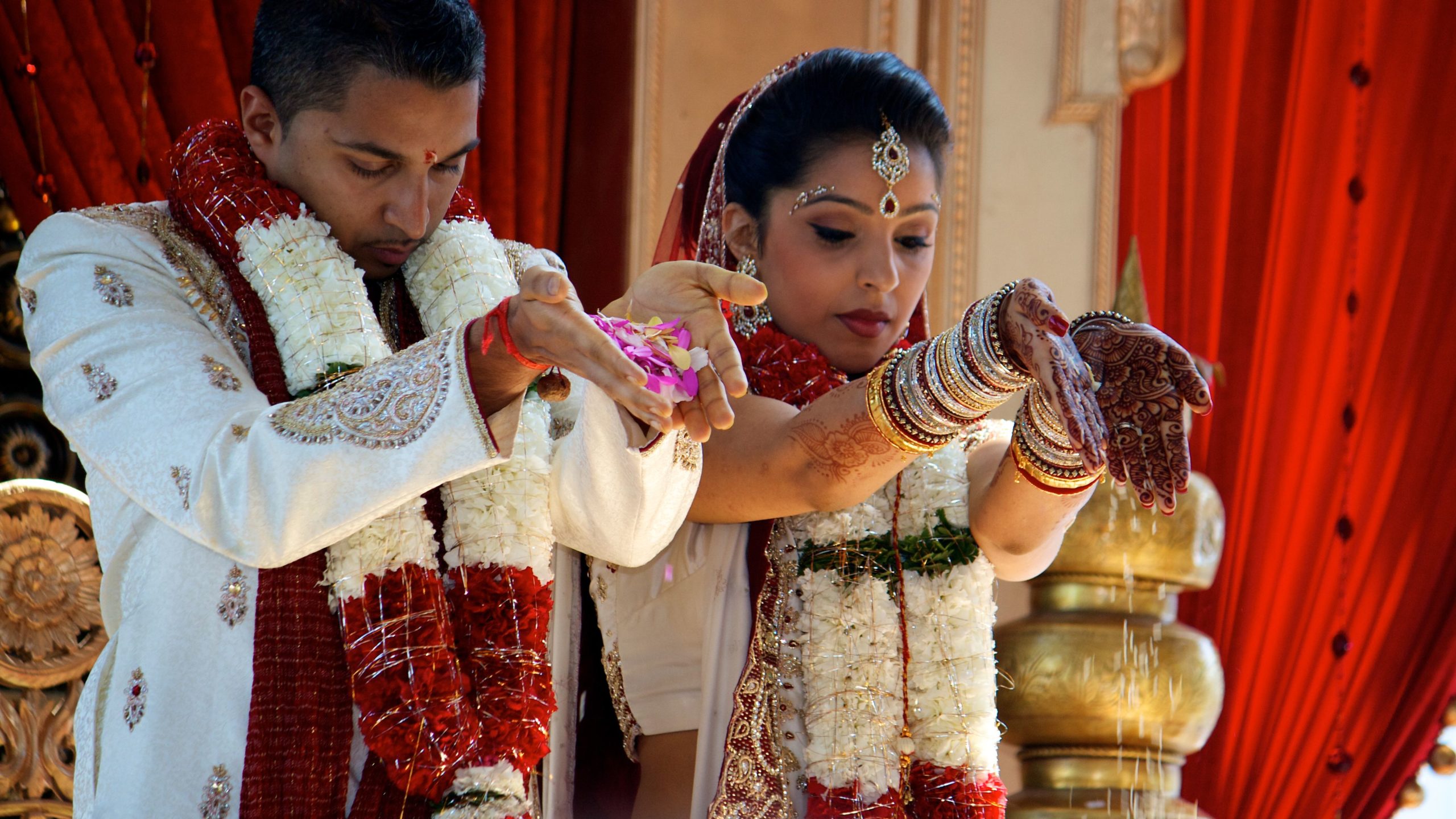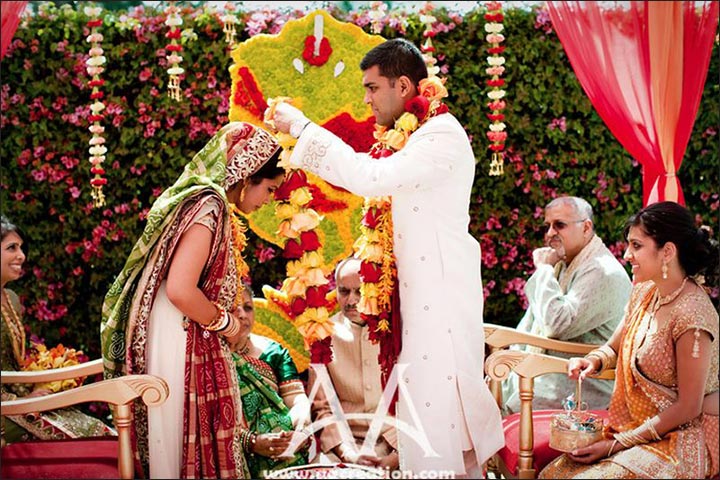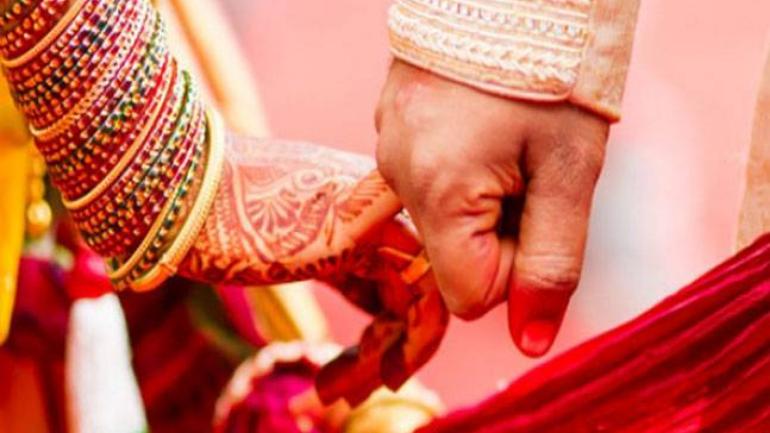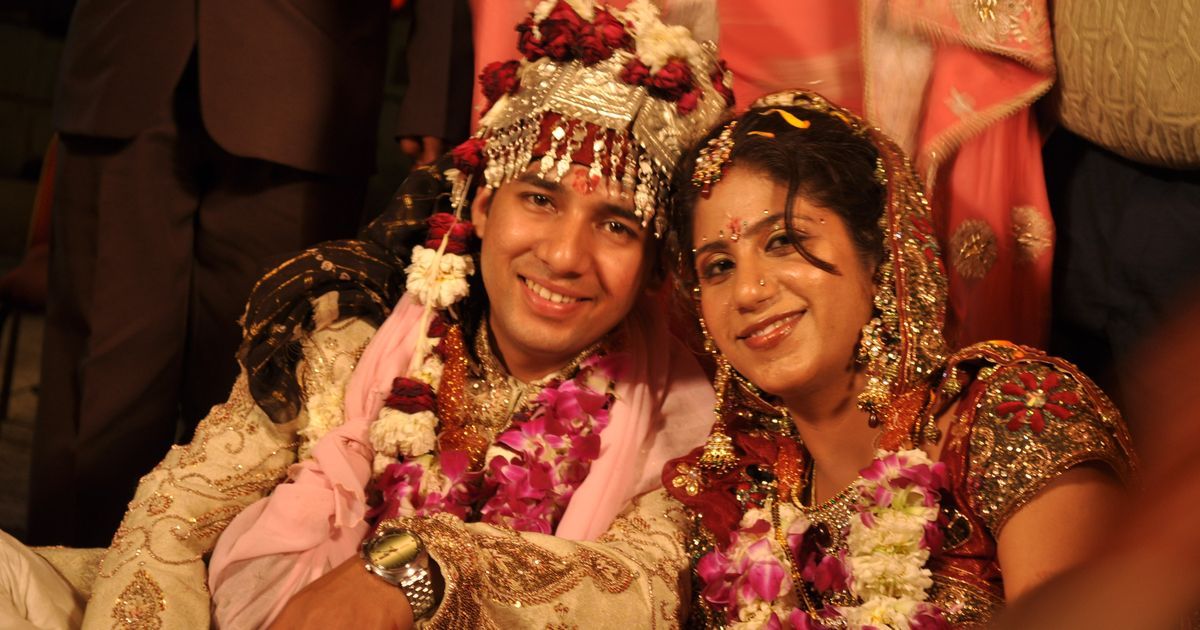Marriage in Hindu : The 8 kinds of Marriage in Hindu Culture
Marriage in Hindu, According to classical tradition, there are eight types of marriage. These are Brahma, Daiva, Arsh, Prajapatya, Gandharva, Asuri, Rakshasi and Paishach marriage. Of these eight marriages, Brahmo marriages are said to be the best and recognized, while other marriages fall into some moderate and some inferior categories.
These traditional marriages are called as arranged marriages, forced marriages, stolen marriages, ongoing marriages, love marriages, etc. by the Nepali society. Traditionally, arranged marriages were ubiquitous. Stolen marriages and arranged marriages were also prevalent in some castes. Currently, love marriage is flourishing in all educated societies.

Marriage in Hindu
In a way, it has become valid. The practice of continuing marriage is disappearing. It is customary for two or three people to go to a village and get married in a normal way and bring a girl.
Speaking of ancient times, in Hindu society, marriage is not a means of luxury but a religious rite. Marriage is one of the sixteen rituals that Hindus should observe and follow. Rituals are rules made for the purpose of living a pure life. Culture purifies the conscience, a happy married life can be lived through marriage. Marriage within the rites is a spiritual marriage.
Brahma marriage:
A marriage which is arranged with the consent of both the parties and with the consent of the bride with a suitable groom of the same class and age is a Brahma marriage. In this marriage, Vedic rituals and rules are followed. Kanya is donated by adorning it with ornaments, clothes etc. Marriage is the best marriage. In this marriage, the marriage of the same bride and groom will be decided by the consent of both the parties, so the present marriage can be considered as this type of marriage.

Marriage in Hindu
Divine marriage:
In this marriage, a bride is given to an ascetic. Virgo is donated. In this, marriage is solemnized with the consent of the bride for the purpose of a service act, religious act or purpose. This type of marriage is considered moderate as both the husband and wife fast together.
Prajapatya marriage:
In such a marriage, permission is not taken from the bride. The parents marry the bride after seeing the worthy groom. Especially in such a marriage, the parents marry a rich and distinguished person without the consent of the bride.
Arsh Marriage:
In this marriage, it is customary for the bridegroom to give a cow or a pair of oxen as a price to the bride, especially to the bride’s parents.

Marriage in Hindu
Gandharva Marriage:
There is no consent of the family in this marriage. No rituals are followed. Gandharva marriage is a marriage that is performed without the consent of the parents after the young men and women who have reached the age of marriage like each other.
Demon Marriage:
In such a marriage, the bride is accepted by the groom for a fee. Virgo is obtained voluntarily by showing wealth or temptation to the girl’s relatives. In such a marriage, the bride does not consent. She is abducted and forced into marriage.
In some castes in Nepal, until some time ago, it was customary to forcibly pick up a girl of one’s choice from a gathering place. Such a practice is now very rare. Such a girl is not taken back home. Kanyapaksha accepts the abducted man.
Read Also
Vampire Marriage:
Vampire marriage is when a sleeping or intoxicated girl is raped and forcibly adopted in private. The last four marriages above are considered unholy by the scriptures. Chanakya says- ‘Marriages performed according to the wishes of the bride’s father are religious. The other four marriages are not in harmony with religion. These marriages are rape of virgins. The best marriage is the one that makes everyone happy. It increases everyone’s happiness. ‘
The mention of the eight types of marriage practices mentioned above suggests that such practices were prevalent at the time. It is said that Manu, Parashar and other memorabilia recognized these marriages based on the prevailing marriage customs of different castes in ancient times. Manu had reserved the first four marriages for the Brahmin class, the Rakshasi and Gandharva marriages for the Kshatriyas and the demonic marriages for the Vaishyas and the Shuras. Vampire marriage was not considered appropriate for any class of Aryans.

Marriage in Hindu
Changed marriage
At present, the practice of marriage has also been modified in a timely manner. The tradition of marriage established by his ancestors, according to the place-condition-caste and nature, he is found to be a part of his life by picking it. Marriage has been established as the strongest tradition in the society but over time, great changes have taken place in the style of marriage and marital life.
According to Hinduism, marriage is a ritual that must be performed with great care. It is necessary to investigate long-distance blood relations. Once both parties are satisfied with this, things move forward. Auspicious moments or marriages are taken out. The marriage is solemnized by a Vedic scholar.
There are three types of debts owed to man: debts, sage debts and patriarchal debts. Devotional debt can be freed from patriarchal debt through devotional work, sage debt through self-study, and proper and virtuous marriage to a father by giving birth to a religious and virtuous son. In this way, the ultimate purpose of marriage is to have children in order to preserve the tradition of serving the fathers and following the righteous religion. For this reason, Brahma marriage is established and recognized in Hindu society as a sacred rite.
Comment Here!